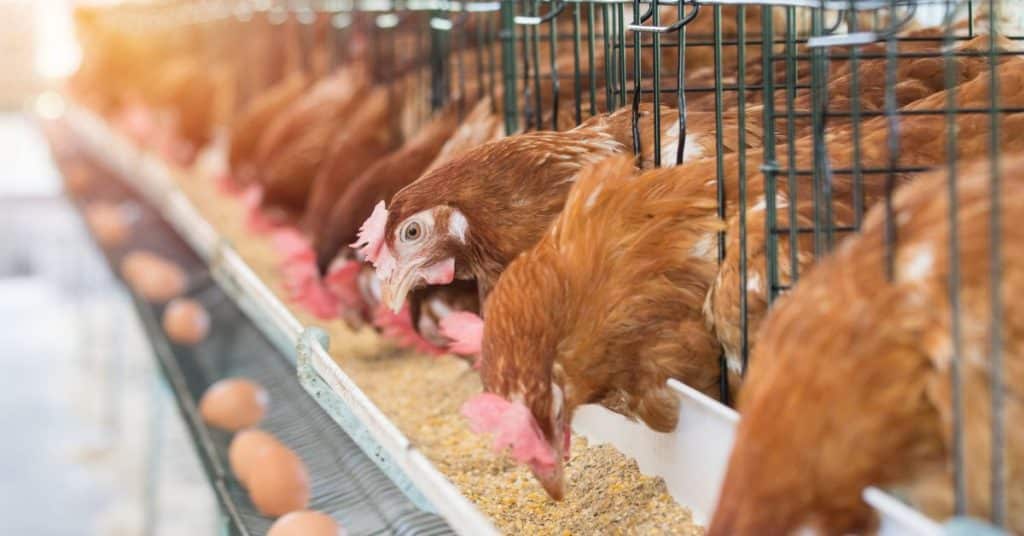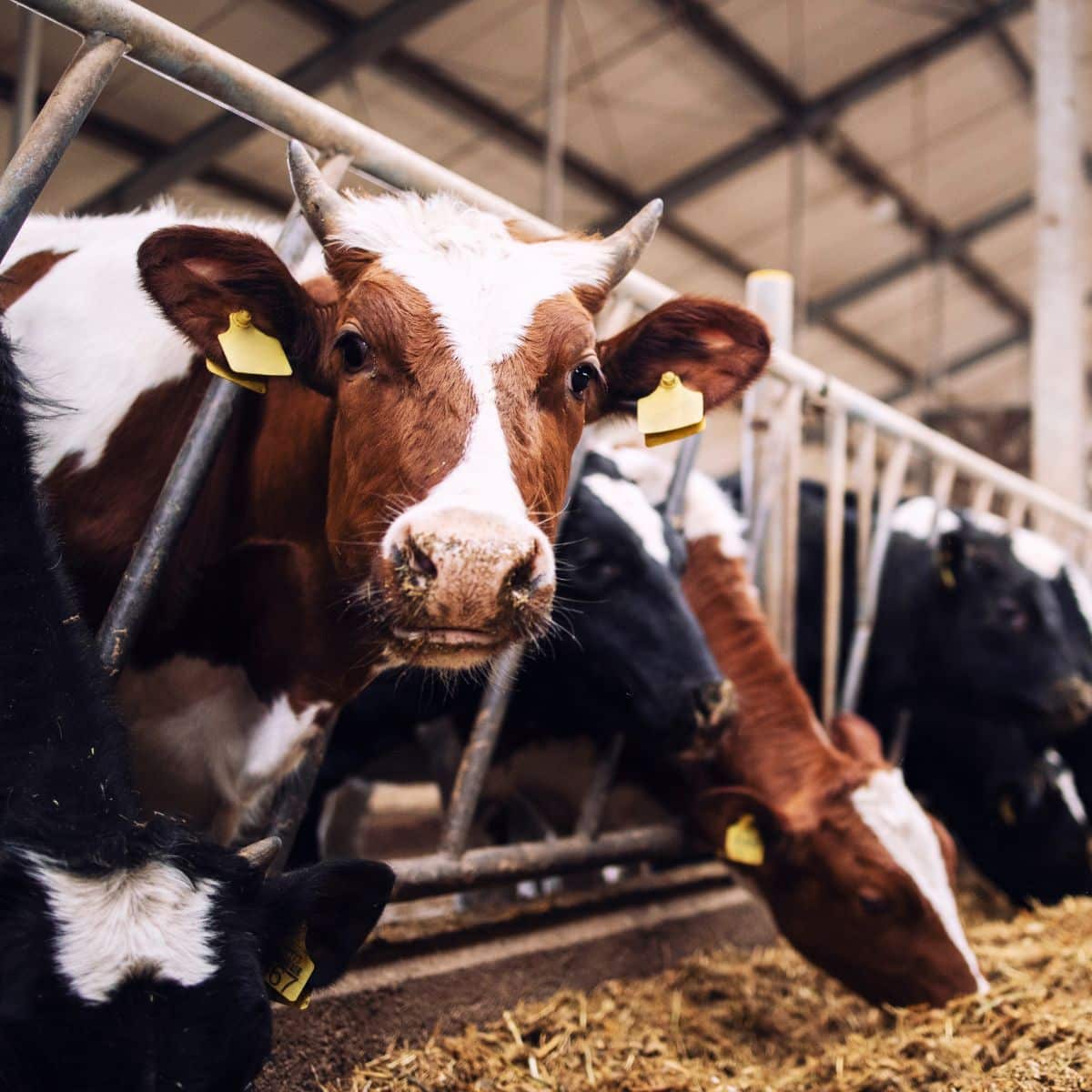

Many people know that animal agriculture is far less environmentally sustainable and that diets containing excessive amounts of animal-based foods compromise our health in numerous ways. Most of our resources at the T. Colin Campbell Center for Nutrition Studies (CNS) relate to these concerns (you can learn more about Food and Sustainability or Plant-Based Nutrition here). Still, there are other problems associated with animal agriculture that deserve scrutiny; in this article, we’ll explore three of them: antimicrobial resistance, pathogens, and inhumane working conditions.
Antimicrobial resistance (AMR) occurs when antimicrobial medicines (antibiotics, antivirals, antifungals, and antiparasitics) become ineffective, increasing the risk and severity of diseases caused by microbial species.[1] Such medicines “are the cornerstone of modern medicine,” so any decrease in their effectiveness has huge repercussions: researchers estimate that 10 million annual deaths and $100 trillion will be attributable to antimicrobial resistance by 2050.[2] But don’t let the year 2050 fool you: this is a problem today, not only in the future. It was reported by the Centers for Disease Control and Prevention (CDC) that antibiotic-resistant infections occur every 11 seconds in the US and that someone dies from such infections every 15 minutes, rates which outpace previous estimates.[3]
According to the World Health Organization (WHO), “Priorities to address AMR in human health include preventing all infections [. . .] ensuring universal access to quality diagnosis and appropriate treatment of infections [. . .] and research and development for novel vaccines, diagnostics and medicines;” however, the most important thing we can do to control the increase of AMR is to prevent the misuse and overuse of antibiotics.[1] Toward that end, we must focus on the antibiotics used in animal agriculture, which overlap with those used for human medicine.
Resistant bacteria are not confined to animals; they can be transmitted to humans through multiple means. In a large-scale systematic review commissioned by the WHO Advisory Group and published in 2017, researchers investigated the results of interventions that reduce antibiotic use in animal agriculture.[2] They found that such interventions help successfully reduce antibiotic-resistant bacteria in both animals and humans, although the number of studies involving human populations is lower. “At minimum,” they write, “the benefit appears to extend to farmers and those in direct contact with food-producing animals. The evidence of benefit for the general human population is less clear, but has potential for broad-reaching effects.”
Effective interventions to reduce antibiotic resistance include national antibiotic reduction targets, mandatory bans, benchmarks imposed at the farm level, and required testing for resistance susceptibility. These are more common in the European Union, particularly in countries like Denmark and the Netherlands, which have implemented such policies for decades.[4]
The US, by contrast, has failed to advance a sufficient, consistent national policy. Although individual states and cities have tried to take steps toward preserving the effectiveness of antimicrobials, there is a glaring need for coherent leadership at the federal level. If anything, we seem to be moving in the wrong direction. The total share of medically important antibiotics used in human medicine, as opposed to animal agriculture, was less than 40 percent in 2017.[5] By 2020, it was barely over 30 percent.
Why do we use the majority of our antibiotics for animals? Partly because they increase growth rates but also because they stifle the outbreak of infections. Neither of these is necessary. The second reason would be a complete nonissue if we had not designed a system of animal agriculture that is so horribly susceptible to infections in the first place. Were it not for this system, the need for antibiotics would plummet.
It’s no wonder that enormous quantities of antibiotics are needed to sustain industrial animal agriculture: these systems are intensive breeding grounds for pathogens that can kill huge numbers of animals and even spread to humans.
About three-fourths of novel infections are zoonotic, meaning transmissible from animals to humans.[6] Although many people associate these infections with contact between humans and wild animals, intensive animal farming is arguably the much more concerning driver of zoonotic diseases. Intensive animal farming, as in concentrated animal feeding operations (CAFOs), forces as many genetically similar animals into as small a space as possible and subjects them to extremely unsanitary and unthinkably stressful conditions. These factors all inhibit the animals’ natural immune responses, making them highly susceptible to disease, which can then spread rapidly throughout the flock.
The problem is that less intensive animal agriculture is not a realistic alternative. Although free-range animals may be less susceptible to disease, they require a much larger footprint, which results in even more deforestation and loss of natural habitats, and this loss of natural habitats also contributes heavily to zoonotic pathogen spread. Essentially, there’s no winning as long as animal food consumption remains high. This paradox has been described as “the infectious disease trap of animal agriculture”: both more intensive and less intensive animal agriculture systems promote zoonoses.[7] The only realistic solution, given what we currently know, is to attack the root of the problem by decreasing the demand for meat.
Although the exact zoonotic disease risks of particular foods and diets are difficult to quantify, shifts toward plant-rich diets should play a central part in reducing zoonotic disease risk.[7] Add to this the many other benefits that have been more robustly quantified—plant-based diets are better for the environment, human health, and animal welfare—and it seems a no-brainer. They conclude, “National governments should coordinate their support for a wide range of policies and activities that support [primary prevention . . . which] can guide and empower decision-makers to escape the zoonotic disease trap of business-as-usual animal agriculture.”

Christina Cooke wrote an excellent article for Civil Eats in 2022 that investigates not only the dangers of animal agriculture but also the failure of policymakers to regulate the industry.[8] I would recommend it to anyone interested in learning more about this subject.
Perhaps the most alarming fact she highlights is that the US Occupational Safety and Health Administration (OSHA) is severely limited in its ability to protect farm workers due to provisions in the agency’s 1976 budget prohibiting federal funds from being used for OSHA oversight. Exempt farm employers are those with operations of ten or fewer employees and no temporary labor camp activity within the last year; such farms escape from the “enforcement or administration of all [OSHA] rules, regulations, standards, or orders [emphasis added].”[9]
Exemption from OSHA oversight means no health or safety inspections, no response to employee complaints, no safety education and training, no intervention even when there is imminent danger, no reporting of injuries, and more. Because of this loophole, the workers at “96 percent of operations that hire people to produce pork, eggs, beef, poultry, and milk in America” are unprotected.[8] OSHA cannot investigate even after tragedy strikes: “85 percent of the deaths related to animal agriculture [from 2011 to 2020] were not reported to the agency.” Some states run their own OSHA offices, and a dozen of these opt out of the exemption, but these states must rely on their own funds for enforcement. As you might expect, these states have lower fatality rates than those that abide by the so-called small farm exemption.
That worker safety is deprioritized in one of the most dangerous occupations is not only nonsensical—it’s also by design. The industries and the lobbyists representing them are intent on hiding the dangers of this work from OSHA, journalists, and the public at large. The exemption comes from the same place as ag-gag laws that prohibit images from escaping CAFOs: under the guise of being pro-business, both laws are sinisterly anti-public, limiting transparency and accountability as much as possible.
Despite all their efforts to hide and minimize the dangers involved in needlessly raising animals for food, we know that those dangers exist.[10] In addition to the most obvious dangers, like being mangled by animals or heavy machinery, CAFOs “generate and store many contaminants on-site,” which can severely damage respiratory health.[11] Workers are constantly exposed to these contaminants, including pesticides, noxious materials, airborne organic dust, methane, and ammonia.
[The] health impacts of working in various agriculture and animal production facilities are many-fold, and the majority of the symptoms indicate respiratory exposure to irritants. Full-time barn workers, veterinarians and residents near CAFOs are exposed to various contaminants and report symptoms ranging from irritation of mucus membrane, eyes, nasal congestion and runny nose, wheezing, coughing and dyspnea, asthma, asthma-like symptoms, exacerbation of pre-existing asthma, chest tightness and exercise intolerance. Particularly, barn workers experience annual decline in their lung function.
Because of the tenuous immigration status of many farmworkers, it is practically impossible for them to advocate for change even in the worst circumstances. And to be clear, this critique does not apply only to animal agriculture. There are countless examples of modern-day slavery at the heart of our agricultural system. “Few cases garner the same level of attention and headlines as Georgia’s shocking Operation Blooming Onion,” reports Tina Vásquez for Prism:[12]
Migrants from Mexico and Central America were forced to dig for onions with their bare hands under the threat of gun violence, earning just 20 cents for each bucket harvested. At least two people died from heat exposure on the job, and one woman was repeatedly raped. One of the victims’ labor camps was surrounded by electric fencing, and they were otherwise held in cramped and unsanitary mobile homes with raw sewage leaks and no access to food or safe drinking water.
Such heinous crimes are not nearly as uncommon as you might expect. Trafficking, sexual exploitation and rape, stolen wages, dangerously unsanitary conditions, and other atrocities are rife in farmworker labor camps, many of which are deliberately hidden from the public eye. In an analysis of geographic information systems (GIS) data, researchers found that more than one-third of farmworker labor camps in east central North Carolina were hidden.[13]
How much suffering are we willing to allow others to endure so that we can enjoy cheaper prices at the grocery store? You can learn more about modern-day slavery and the importance of fair food from the Coalition of Immokalee Workers.
Sadly, it doesn’t get easier farther down the chain, with the nightmarish working conditions in meat processing plants.[14] And because every step of this chain is highly consolidated, big farms can more easily exploit workers without facing any competition or repercussions.
Until regulatory institutions wake up from their decades-long comas, we as consumers can raise awareness about the violence of the industrial food system, inform ourselves to more effectively battle against the power, and choose to support more sustainable food systems—the kinds of sustainable food systems that don’t directly contribute to numerous existential threats.
Copyright 2026 Center for Nutrition Studies. All rights reserved.